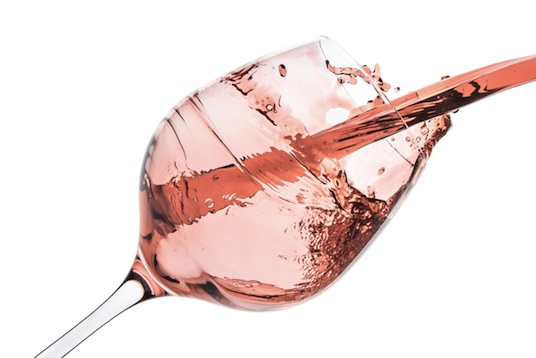White wine comes from white grapes and red wine comes from red grapes, so how do you get pink wine if there are no pink grapes?

There are no pink grapes, so how do you get pink wines?
I like to think about rosé like the tie-dye of wine. You just sort of let the juice soak up the color for a little while and make the wine when you have the color you want.
Here’s how it works. Like red wine, rosé gets its color from contact with the grape skins. After the grapes are pressed, the juice is allowed to sit around with the skins for a while. The technical term is maceration. Feel free to throw that term around in conversation since it sounds a little kinky.
Maceration usually lasts just a few hours (by contrast, red wines can sit on the skins for weeks). The darker the grape skins and the longer the maceration period, the darker pink your wine will end up. It’s sort of like making a cup of tea. The longer you keep the tea bag in the water, the darker your tea will be.
After soaking on the skins for the desired length of time, the juice is transferred into a fermentation tank and made into wine much the same way your average white wine would be…with just that delicate touch of pink setting it apart.

How do they get that pink so pink?
There’s a similar method called saignée, or bleeding (gotta love the French and their descriptions), where some of the juice from a red wine that has just been pressed is “bled off” so that the remaining red wine has a higher ratio of juice-to-must (another term for skins and yeast) for more concentration. The bled-off juice is fermented on its own, but has already taken on a tinge of color from its brief contact with the skins. In this way, saignée wines are sometimes seen as byproducts. Delicious byproducts, though.
I’ll get into the different grapes used to make rosé and the qualities each has in a separate post. For now, here are three rosés to try this summer, and what to drink them with.

If in doubt, go with a Provençal rosé like Commanderie de Peyrassol. Photo courtesy of DomaineLA.
La Commanderie de Peyrassol: This coral-pink wine comes from one of the bastions of rosé winemaking, France’s sunny southern region of Provence. It uses a typical blend of Grenache, Syrah and Cinsault, producing a wine with summery-bright flavors of strawberry, wild herbs and a crisp minerality. Plus, if you’re a fan of the Da Vinci Code, the domain dates back to the 13th century, when it was founded by the Knights Templar. Price range: $13-$17. Pairing: Think about where this wine comes from…the land of bouillabaisse, fresh grilled seafood, aioli fries…and enjoy it with all of the above.
Ehlers Estate Sylviane Rosé: This wine might be from Napa, but it has hints of the Loire thanks to the Cabernet Franc grapes that are used to make it. Tropical flavors complement a primary bouquet of raspberry with a hint of grassiness and summery watermelon keeping it light and fresh. Price range: $28-$35. Pairing: The perfect picnic wine. It’s light enough to drink on its own, but will stand up to cold cuts, cheese, nuts and other sundries.
Rosado Seleccion, Bodegas Borsao: This Spanish rosé from the Campo de Borja region is made from 100% Garnacha (Grenache to you Francophiles), while a little more rustic than some other rosés, it still delivers lovely notes of dried berries, orange zest and just a hint of spice. Price range: $9-$12. Pairing: This one’s got a little more body and heft than your typical rosé, so pair it with that seafood paella recipe you’ve been meaning to try.

